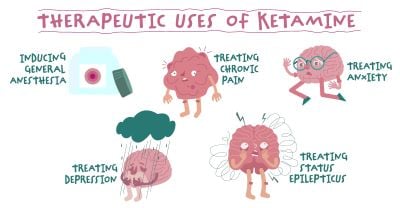
A recent webinar at Penn Medicine’s Leonard Davis Institute (LDI) for Health Economics focused on the growing set of challenges facing rural hospitals. One issue the panelists focused on is why the Rural Emergency Hospital designation does not appear to be finding success among rural hospitals.
Rachel Werner, M.D., Ph.D., executive director of LDI, began the discussion by setting the stage: Rural hospitals are facing a crisis, she said. Since 2005, more than 190 rural hospitals have closed across the United States and many more are in danger of closing due to financial shortfalls, Werne said. This problem is only getting worse: A recent report finds that half of rural hospitals lost more money last year, up from 43 percent the year before.
Paula Chatterjee, MD, MPH, is an assistant professor of Medicine at Penn’s Perelman School of Medicine and director of Health Equity Research at LDI. She explained that the Rural Emergency Hospital designation is a relatively new attempt by CMS to try to address some of the challenges that rural hospitals face regarding the provision of acute hospital care.
The program allows rural hospitals to close their inpatient operations and maintain a free-standing emergency department and outpatient services. In exchange for doing that, Medicare provides them with a setup fee and an additional outpatient Medicare payment for providing those outpatient services. “The show has been very controversial for a number of different reasons,” she said. “Its stated purpose and statutory objectives are basically to meet the challenge of providing acute hospital care when there are low occupancy rates. “It’s too early to know if he will or will succeed.”
Chatterjee said some people are wondering: Why do we keep pulling clinical services out of rural areas? Why is that the answer? Why isn’t the answer to provide additional support to these facilities to allow those services to thrive, proliferate, and care for patients?
“Another area of uncertainty for hospitals is that they don’t know how the math is going to add up here,” Chatterjee said. “You can turn off all your inpatient services. Yes, that addresses some degree of fixed costs. But it’s not very clear whether this facility fee and this outpatient add-on will actually make up that difference, and again, it varies wildly, depending on payer mix and occupancy. It’s an amount of financial risk that is difficult to accept for a rural hospital that already operates amid a lot of day-to-day financial volatility. It is probably not surprising, given these concerns, that rural hospitals are not really encouraged to participate in this program. Last time I checked, a month or two ago, there were fewer than 20 hospitals that had signed up to consider converting to the Rural Emergency Hospital designation.”
Another panelist, Tony Leys, rural editor and correspondent for KFF Health News, said he believes it depends on the situation whether the designation is attractive or not. “If it’s a small hospital in a health system with a much larger hospital in the future, it seems more feasible. You could set up a path where people could easily come and go and have access to their records at your hospital,” he explained, whereas if it was a very isolated stand-alone hospital, it would be much more difficult to do.
Leys noted that during the height of the pandemic, many of these hospitals that normally have only one or two inpatients a night suddenly had many more. “It may have only lasted a few weeks or a couple of months, but during those few weeks or a couple of months, their inpatient units suddenly became really important, because the medical centers that they normally transferred patients to were crowded and begging for alms. They allowed them to keep as many patients as they could,” she said. “I’ve talked to hospital administrators and they told me that if we close this inpatient unit and that happens again, what are we going to do? I think part of the hesitation is because of that. I mean, that’s a pretty recent experience that they just went through.”
Harold Miller, MS, president and CEO of the Center for Healthcare Quality and Payment Reform, said the Rural Emergency Hospital program is just one example of a response to the problem that is based on a myth. “The myth is that the reason rural hospitals are losing money is because they provide hospital care. When we looked at this at several rural hospitals several years ago, what we found was that hospitals were losing money in their emergency departments and their primary care units because private insurance plans were paying them less,” he added. “And, in fact, if the inpatient unit is eliminated, the hospital’s financial situation would be much worse than otherwise because much of the inpatient unit staff is shared with the emergency department.”
The other thing people don’t understand, Miller added, is that when they talk about the small number of patients in the inpatient unit, they’re talking about acute patients. Many small rural hospitals also have rehabilitation patients and provide skilled nursing facility care, as well as long-term care. “When you talk about the hospital being forced to close its inpatient facilities, you’re talking about eliminating inpatient care, rehabilitative care and long-term care in the community, and not really saving the hospital money, and perhaps make their situation worse. he said. “So the program is really based on a false premise, and that’s why only two dozen hospitals have signed up because it doesn’t really address the problems.”
Other myths about rural health
Miller said there are actually other myths about rural hospitals. “I think the most problematic myth is that the reason they are closing has something to do with low Medicare or Medicaid payments or lack of Medicaid expansion,” she said. “The reality is that it is the low payments from private insurance plans that are causing the problem in rural hospitals. Many hospitals are losing significant amounts of money to private insurers. Everyone believes that both large and small hospitals receive higher payments from private insurance plans than from Medicare and Medicaid. But in reality, exactly the opposite is true in many small rural hospitals. Private insurance plans pay them less than Medicare and, in some cases, even less than Medicaid.”
He said it’s also a myth that the vast majority of patients served by rural hospitals are Medicare and Medicaid patients. In fact, 40 to 50 percent of the services rural hospitals provide go to privately insured patients, Miller said. “So, if a rural hospital receives insufficient wages for half of its patients, it is not surprising that it loses money.”
And it’s not just that private insurance plans don’t pay enough, he said. In many cases, they pay nothing. They are denying claims; They refuse to even contract with small hospitals because they can, and large hospitals have plenty of staff who can fight prior authorization denials and denied claims from health insurance plans. “Small rural hospitals don’t have the staff to be able to do that.”
This problem is getting worse, Miller said, because of the expansion of Medicare Advantage, administered by private insurance companies. Original Medicare pays a critical access hospital based on its costs. Medicare Advantage plans are not required to pay on a cost-based basis, she explained. Plus, Original Medicare pays on time. If a doctor orders a service, Medicare Advantage plans are not required to pay when a doctor orders a service. They may deny you due to prior authorization requirements, etc. All of that creates significant losses for many rural hospitals, she said.
“None of the programs that the federal government has created do anything about this. “Medicaid expansion is certainly helpful in terms of reducing the number of uninsured patients, but it does nothing to ensure that payments to insured patients are sufficient to cover the cost of those services,” Miller said. “And the other programs that CMS has created do nothing to try to ensure that payments from private insurers are adequate.”
He stressed that the way to solve the problem of rural hospital closures is actually quite simple. “It is simply a matter of both public and private payers paying adequately to cover the costs of providing services in rural communities. If we want to have those services, we must pay for them. The remarkable thing about this is that it doesn’t actually cost a lot of money to fix. Eliminating the deficits would only cost a few billion dollars. “That’s about two-tenths percent of what we spend on hospitals.”







